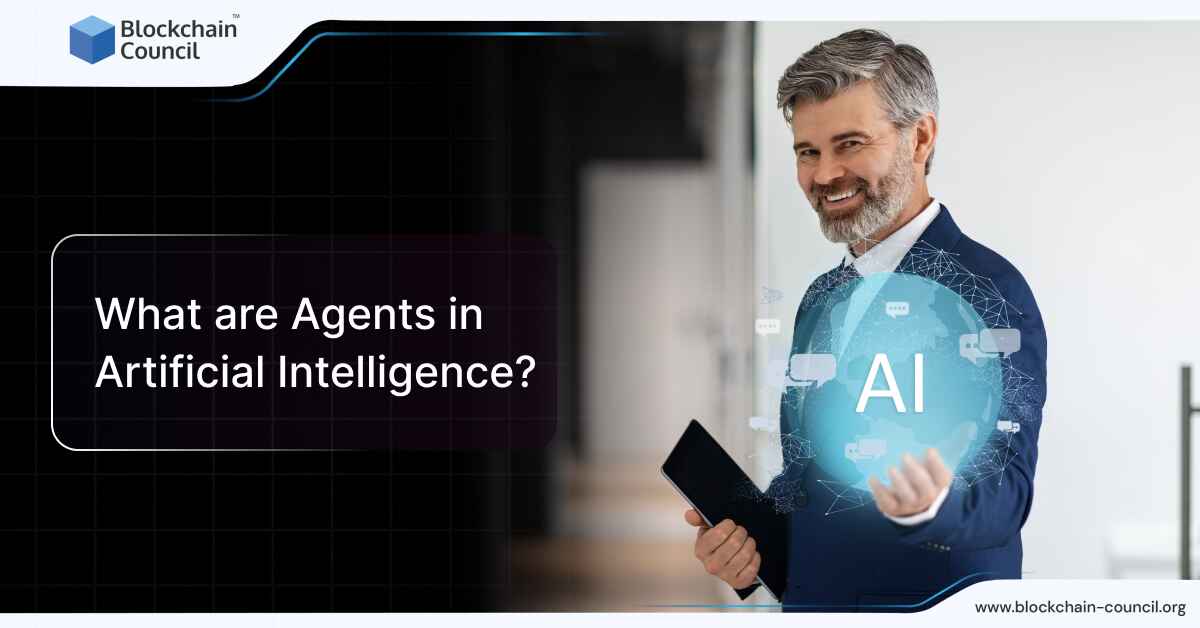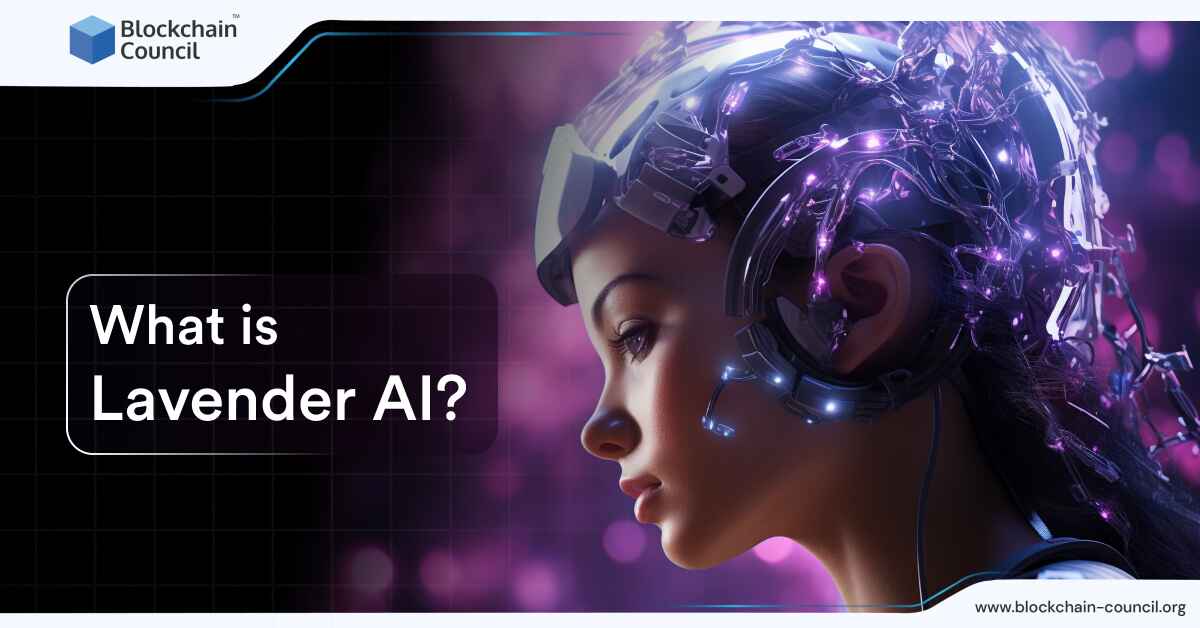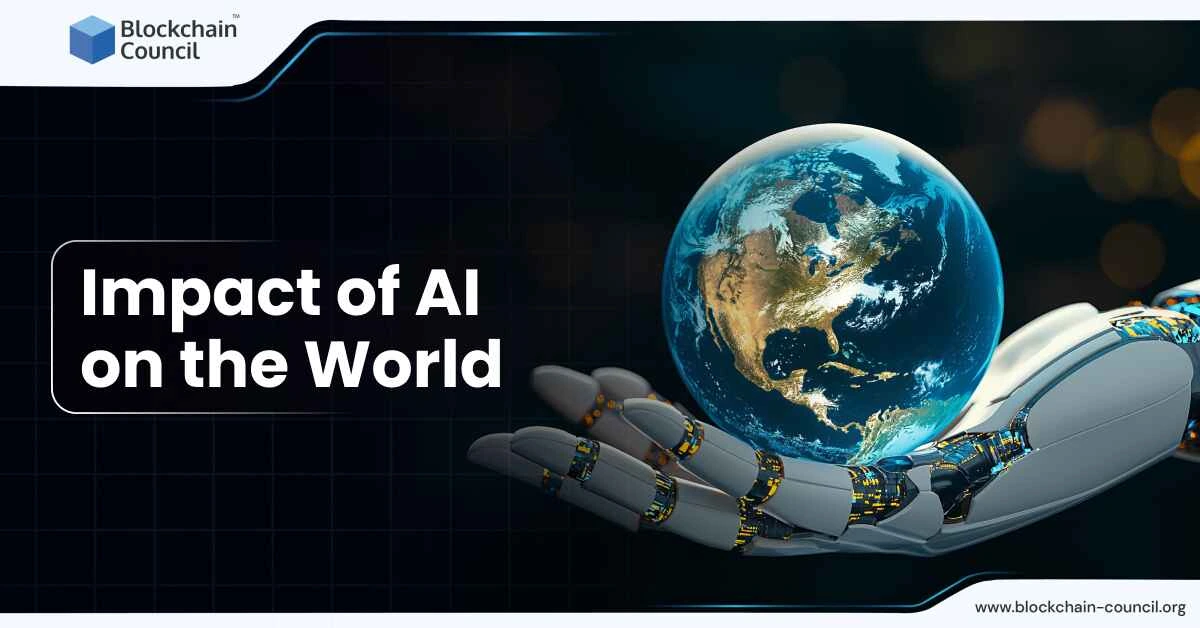
- Blockchain Council
- September 13, 2024
Summary
- AI agents are smart systems or programs that perceive their surroundings, make decisions, and act to achieve specific goals.
- They play a pivotal role in automating tasks, solving problems, and mimicking human-like cognition.
- Agent-based systems in AI have a historical timeline dating back to the 1950s, with key milestones in AI development.
- AI agents differ from passive objects in programming, as they possess autonomy to make decisions and take actions.
- Different types of AI agents include simple reflex agents, goal-based agents, learning agents, and multi-agent systems.
- AI agents operate based on architectures like symbolic, connectionist, and evolutionary, as well as operational models like reactive, deliberative, and hybrid.
- They perceive their environment through sensors and respond using actuators, with the ability to learn and adapt over time.
- Goal functions guide AI agents towards achieving desired outcomes, and they work through a series of steps to accomplish tasks.
- Real-world applications of AI agents span various sectors, including finance, healthcare, agriculture, automotive, surveillance, and more.
- AI agents have limitations such as data dependency, lack of understanding complex human emotions, privacy concerns, cost, and complexity.
- However, they hold potential in federated learning, swarm intelligence, cognitive architectures, hybrid intelligence, and quantum AI for the future..
In today’s rapidly advancing technological landscape, artificial intelligence (AI) has become a cornerstone of innovation, driving changes across various sectors. A remarkable 37% of organizations have implemented AI in some form, underscoring its significant impact on the business world. In today’s fast-paced world, where technology continues to advance at an unprecedented rate, the term “Agents in Artificial Intelligence” has become increasingly prevalent. But what exactly are they?
Within this realm, AI agents stand out as pivotal components, acting on behalf of users to perform tasks, solve problems, and even make decisions. This article delves into the fascinating world of AI agents, offering readers a comprehensive overview of their mechanisms, applications, and the exciting prospects they hold for the future.
What Is an Agent in Artificial Intelligence?
An agent in artificial intelligence (AI) is essentially a smart system or a program that can perceive its surroundings, decide on the best action to take, and act to achieve specific goals. These agents can work on their own, making decisions and learning from their interactions. They’re key to making our technology smarter, helping with everything from simple tasks at home to solving complex problems in various industries.
The Role of Agents in AI: An Overview
AI agents are pivotal in driving innovation and efficiency across numerous sectors. They can perform a wide range of tasks, from automating routine processes to making complex decisions, mimicking human-like cognition. Their ability to adapt and learn from their environment makes them invaluable for enhancing cognitive processes, automating tasks, and pushing the boundaries of technological capabilities.
A Brief History of Agent-Based Systems in AI
Here’s a brief overview of agent-based systems in AI throughout history, highlighting key milestones:
- 1950s – The Conceptual Beginnings: The idea of machines capable of performing tasks that require human intelligence begins to take shape. Alan Turing’s work, including the Turing Test, lays the foundational concepts for AI and intelligent agents.
- 1960s – Early AI Research: Research into AI starts to gain momentum. This era sees the development of the first AI programs, such as ELIZA (a natural language processing computer program) and the General Problem Solver, an early attempt at simulating human problem-solving abilities.
- 1970s – Rule-Based Systems: The focus shifts towards developing rule-based expert systems, designed to mimic the decision-making abilities of human experts. These systems can be seen as early agents, capable of making decisions based on a set of programmed rules.
- 1980s – The Rise of Autonomous Agents: Research begins to focus on creating autonomous agents. These systems are designed to operate in complex environments, making decisions without human intervention. The concept of multi-agent systems also starts to emerge, facilitating interaction between multiple agents.
- 1990s – The Internet and Mobile Agents: With the advent of the internet, the focus shifts towards developing agents that can navigate and interact with the emerging digital world. Mobile agents, capable of moving across networks and performing tasks, become a significant area of research.
- 2000s – Agent-Based Modeling and Simulation: The use of agent-based models in simulation becomes prevalent. These models are used to simulate complex systems in various fields, from economics to social sciences, allowing for the analysis of interactions within these systems.
- 2010s – Machine Learning and Autonomous Agents: The integration of machine learning techniques with agent-based systems marks a significant advancement. Agents now can learn from their environment and experiences, leading to more adaptive and intelligent systems.
- 2020s – AI Agents in Everyday Life: AI agents become integral to various aspects of daily life, from personal assistants like Siri and Alexa to autonomous vehicles and smart home devices. The focus is on creating agents that can understand and interact with the world in a human-like manner.
Also Read: Deep Learning vs Machine Learning vs Artificial Intelligence: A Beginner’s Guide
Agents VS Objects
In AI, agents are defined by their ability to perceive their surroundings through sensors and act upon that environment with actuators. Unlike objects, which are passive elements in programming, agents possess the autonomy to make decisions and take actions towards achieving their goals. This autonomy allows agents to perform tasks ranging from simple data analysis to complex problem-solving and decision-making processes.
Types of Agents in AI
AI agents are categorized based on their operational mechanisms and intelligence levels. Here’s a table of the classifications of agents in AI:
| Agent Type | Description |
| Simple Reflex Agents | React to immediate percepts without considering the history of the situation, based on a direct condition-action principle. |
| Model-based Reflex Agents | Maintain an internal state that reflects the world, allowing for informed decisions in partially observable environments. |
| Goal-based Agents | Act to achieve specific goals, evaluating actions based on their potential to achieve these goals. |
| Utility-based Agents | Consider “happiness” or “utility” levels in addition to goal satisfaction, selecting actions that maximize their utility. |
| Learning Agents | Improve performance over time based on past experiences, adapting to new situations and tasks. |
| Hierarchical Agents | Organized in a hierarchy, with higher-level agents directing lower-level ones, facilitating large-scale problem-solving. |
| Hybrid Agents | Combine features of both reactive and deliberative agents, blending quick response with strategic planning. |
| Multi-agent Systems | Involve multiple agents interacting to achieve shared or individual goals, often seen in complex scenarios like supply chain management. |
The Architecture of AI Agents
AI agents are built on various architectures that dictate their ability to understand and interact with the world. Three primary categories emerge: symbolic, connectionist (neural networks), and evolutionary architectures. Symbolic architectures rely on logic and defined symbols to model knowledge, making them great for rule-based environments. Connectionist architectures, inspired by the human brain, excel in pattern recognition and learning from data. Evolutionary architectures use principles of biological evolution to find solutions, making them ideal for optimization problems in vast, complex solution spaces.
Furthermore, agents are classified based on their operational models into reactive, deliberative, and hybrid types. Reactive agents respond directly to environmental stimuli, deliberative agents plan actions by considering future consequences, and hybrid agents combine both approaches for flexibility.
Perception and Sensors: How Agents Receive Information
AI agents perceive their environment through sensors, gathering data to understand their surroundings. This perception capability is crucial, as it enables agents to receive inputs that inform their decision-making processes. Whether through cameras, microphones, or other sensory inputs, perception allows agents to interpret the state of the environment and extract relevant features for action.
Actuators and Actions: How Agents Respond to Their Environment
Once information is processed, AI agents respond to their environment using actuators. This response could be moving a robotic arm, issuing a command, or generating an output signal. The action taken depends on the agent’s architecture and the specific task at hand, aiming to achieve predefined goals or objectives efficiently.
Learning and Adaptation
AI agents improve over time through various learning strategies, including reinforcement learning, supervised and unsupervised learning, and more. These methods enable agents to refine their algorithms based on new data, changing conditions, or evolving objectives, enhancing their ability to tackle complex, dynamic environments.
Goal Functions and Objective Optimization
A critical aspect of AI agent functionality is the use of goal or utility functions, which guide actions towards achieving desired outcomes. Agents may be programmed with specific goals or learn to optimize these objectives over time, adapting their strategies based on success metrics such as reward functions in reinforcement learning or fitness functions in evolutionary models.
Also Read: Top 10 Machine Learning Projects In 2024
How AI Agents Work
| Step | Explanation |
| 1. Goal Initialization | The process begins by defining a clear objective for the AI agent, such as data analysis or customer support automation. Advanced algorithms are used to understand and kickstart the agent’s goals. |
| 2. Task List Creation | Based on the goal, the agent outlines a sequence of tasks. It prioritizes tasks, plans their execution, and prepares for potential obstacles, creating a roadmap to the goal. |
| 3. Information Gathering | To perform tasks efficiently, the agent collects relevant data. This may involve internet searches, accessing databases, or collaborating with other AI models for tasks like image recognition or data analysis. |
| 4. Data Management and Strategy Refinement | As data is gathered, the agent continuously analyzes it to refine its strategy. This step is crucial for adapting its approach to be more effective in achieving its goals. |
| 5. Feedback Integration and Iteration | Feedback, whether from external sources like market data or internal performance assessments, is vital. The agent adjusts its strategies based on this feedback, enhancing its task list and approaches accordingly. |
| 6. Continuous Operation and Adaptive Learning | The AI agent operates in a continuous loop of action, feedback, and adaptation until the set objective is achieved. Throughout this process, the agent learns from its experiences, improving its efficiency and adaptability over time. |
Applications of AI Agents
AI agents are revolutionizing various sectors by automating complex tasks, enhancing customer experiences, and driving innovations. Here are some real-world applications:
- Fraud Detection: Financial institutions use AI agents for detecting fraudulent activities. For example, Mastercard employs AI-based systems to analyze transaction data in real-time, identifying and preventing fraud across its global network.
- Customer Service Enhancement: Bank of America introduced Erica, a virtual assistant that uses AI to help customers with banking tasks, such as checking balances, suggesting how to save money, and making payments.
- Healthcare: PathAI is utilizing AI to assist pathologists in diagnosing diseases more accurately and quickly by analyzing medical images. Their AI-driven platform aims to reduce diagnostic errors and improve patient outcomes.
- Agriculture: John Deere has acquired Blue River Technology, a company that uses AI in agriculture to enable smart spraying equipment. This technology allows for the identification of plants and targeted application of herbicides, reducing the amount of chemicals used and improving yield.
- Automotive Industry: Tesla and Waymo are leading examples in the automotive sector, where AI agents are integral to the development and operation of autonomous vehicles. These AI systems process data from various sensors to navigate roads safely.
- Surveillance: Companies like Hikvision have developed AI-powered surveillance cameras that can identify and track individuals, vehicles, and other objects, improving security and reducing the need for human monitoring.
- Smart Homes: Google Nest products use AI to learn the homeowner’s habits and adjust heating and cooling systems for energy efficiency, demonstrating AI’s role in making homes smarter and more energy-efficient.
- Video Games: AI agents are used to create more realistic and challenging NPCs. Games like The Last of Us Part II by Naughty Dog utilize AI to enhance enemy behaviors, making them respond more naturally to the player’s actions.
- Travel: Expedia and other travel platforms use AI to personalize travel recommendations, optimize pricing, and improve customer service, enhancing the booking experience for users.
- Space Exploration: NASA employs AI agents in its Mars rovers, such as Perseverance, to navigate the Martian surface autonomously, analyze soil samples, and decide which targets to investigate.
Limitations of Current AI Agent Technologies
Despite the vast potential, AI agent technologies have limitations:
- Data Dependency: AI’s performance heavily relies on the quality and quantity of data. Poor data quality can lead to inaccurate outcomes.
- Lack of Understanding: AI agents might not fully comprehend complex human emotions or contexts, limiting their effectiveness in nuanced interactions.
- Privacy Concerns: The extensive data required for AI operations raise concerns about user privacy and data protection.
- Cost: Developing and implementing AI technology can be costly, especially for small businesses or in sectors where technology adoption is low.
- Complexity and Maintenance: AI systems can be complex to develop and maintain, requiring ongoing training and updates to stay effective.
Also Read: Top 10 Must-Have Machine Learning Skills
The Future of AI Agents
- Federated Learning: This approach enhances privacy in AI training by learning from decentralized data sources without sharing raw data. It’s particularly relevant in sectors like healthcare, where data sensitivity is paramount. By learning locally and sharing only model updates, AI agents maintain privacy while benefiting from collective insights.
- Swarm Intelligence: Drawing inspiration from natural systems, such as ant colonies, swarm intelligence focuses on AI agents working collaboratively to solve complex problems. This approach is seen in swarm robotics and optimization algorithms, demonstrating potential for resource allocation and adaptation to dynamic conditions.
- Cognitive Architectures: These aim to mimic human cognitive abilities, enabling AI agents to understand context, reason through complex scenarios, and adapt to changes. The development of cognitive architectures is advancing agents’ human-like intelligence across various domains.
- Hybrid Intelligence: Combining human intelligence with AI agents creates synergistic collaborations. This integration amplifies human expertise, automates routine tasks, and assists in decision-making, leading to enhanced overall performance.
- Context-Aware AI Agents: The ability to understand and adapt to contextual information is becoming increasingly important. These agents leverage NLP, computer vision, and sensor integration to offer personalized experiences by understanding user preferences, environmental conditions, and historical data.
- Quantum AI Agents: The intersection of quantum computing and AI holds promise for solving complex problems more efficiently. Quantum AI agents could use quantum algorithms for optimization, simulation, and data analysis, offering new avenues for AI development.
The Future of Multi-Agent Systems and Cooperative AI
Multi-agent systems are evolving to facilitate more sophisticated cooperation among AI agents. These systems, where agents work towards common or individual goals, are becoming crucial for complex tasks requiring coordination, such as in supply chain management and smart cities. The development of cooperative AI aims to enable agents to understand and predict each other’s actions, leading to more effective collaboration and problem-solving.
Speculations on the Next Generation of AI Agents
The next generation of AI agents is expected to be more autonomous, intelligent, and integrated into human activities. With advancements in federated learning, cognitive architectures, and quantum computing, AI agents will become capable of performing more complex tasks with greater efficiency and less human oversight. The focus on ethical AI development, privacy, security, and reducing biases will also shape the future of AI agents, ensuring they are used responsibly and for the benefit of society.
Conclusion
AI agents represent a dynamic and evolving field within artificial intelligence, marked by constant innovation and a growing impact on society. As we look to the future, the potential of AI agents to transform industries, enhance our daily lives, and tackle complex challenges is immense. With ongoing advancements and a focus on ethical development, AI agents are poised to unlock new realms of possibility, making now an exciting time to be involved in or observe the field of artificial intelligence.
Frequently Asked Questions
What are AI Agents?
- AI agents are software entities capable of performing tasks or services for an individual or a system autonomously, based on data received, interactions, or a set of rules designed to follow.
How do AI agents learn and improve over time?
- AI agents improve through mechanisms such as machine learning, deep learning, and reinforcement learning, allowing them to learn from data, adjust their actions based on feedback, and make better decisions over time.
What role do AI agents play in everyday life?
- AI agents play various roles, from powering virtual assistants like Siri and Alexa to driving autonomous vehicles, enhancing customer service through chatbots, and personalizing user experiences on platforms like Netflix.
What are the ethical considerations in developing AI agents?
- Ethical considerations include ensuring privacy, security, fairness, transparency, and accountability in AI agents’ decisions and actions.
- Developers and stakeholders must address these concerns to build trust and ensure responsible use of AI technologies.





































































 Guides
Guides News
News Blockchain
Blockchain Cryptocurrency
& Digital Assets
Cryptocurrency
& Digital Assets Web3
Web3 Metaverse & NFTs
Metaverse & NFTs
